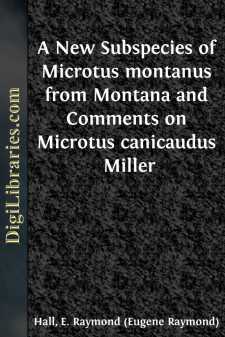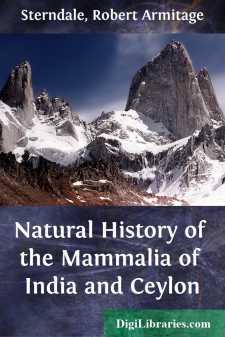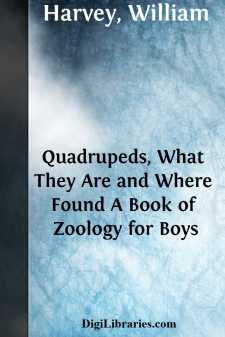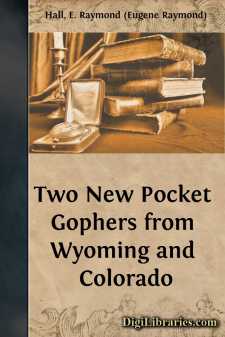Nature
- Animals 47
- Birds & Birdwatching 41
- Dinosaurs & Prehistoric Creatures 1
- Flowers 5
- General 32
- Horses 6
- Insects & Spiders 19
- Mammals
- Mushrooms 2
- Natural Disasters 6
- Natural Resources 3
- Reptiles & Amphibians 2
- Trees & Forests 10
Mammals Books
Sort by:
IN 1949, for the Museum of Natural History of the University of Kansas, Mr. John A. White collected two specimens of the species Microtus montanus in the Bitterroot Valley of Montana, that did not fit the description of any named subspecies. These were laid aside until we could examine the additional specimens from Montana in the Biological Surveys collection in the United States National Museum, some...
more...
IN preparing maps showing the geographic distribution of North American lagomorphs, some conflicting statements in the literature have led us to examine the pertinent specimens of the Florida cottontail and the Audubon cottontail with results as given below. The study here reported upon was aided by a contract between the Office of Naval Research, Department of the Navy, and the University of Kansas...
more...
by:
Adam White
MAN. In this collection, like Linnæus, we begin with man as undoubtedly an animal, as opposed to a vegetable or mineral. Like Professor Owen, we are inclined to fancy he is well entitled to separate rank from even the Linnæan order, Primates, and to have more systematic honour conferred on him than what Cuvier allowed him. That great French naturalist placed man in a section separate from his...
more...
WHAT species of mammals occur on the "coastal island", barrier beach, of Tamaulipas? Are the closest relatives of these mammals on Padre and Mustang islands of Texas, instead of on the mainland of Tamaulipas, or are the mammals on the barrier beach distinct from all others? These were questions that Dr. von Wedel of Oklahoma City and I asked ourselves in March of 1950 when we were in southern...
more...
INTRODUCTION. In laying before the public the following history of the Indian Mammalia, I am actuated by the feeling that a popular work on the subject is needed, and would be appreciated by many who do not care to purchase the expensive books that exist, and who also may be more bothered than enlightened by over-much technical phraseology and those learned anatomical dissertations which are necessary...
more...
by:
William Harvey
Preface. I have been called upon to write illustrative sketches to a series of engravings, designed by an eminent artist. In performing my part of the work I have thrown the Mammalia into twenty-four groups—corresponding more or less to the picture designs—and have dwelt chiefly on the geographical distribution of the animals. The Cetaceae and Vespertilionidae are properly omitted. In the groups...
more...
In the academic year of 1947-48 Montague studied the geographic variation in Thomomys talpoides of Wyoming. His study was based upon materials then in the University of Kansas Museum of Natural History. Publication of the results was purposely delayed until previously reported specimens from certain adjacent areas, especially in Colorado, could be examined. In the autumn of 1950 one of us, Hall, was...
more...








